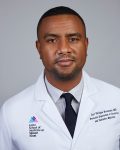



By DEBORAH AFEZOLLI, CARL-PHILIPPE ROUSSEAU, HELEN FERNANDEZ, ELIZABETH LINDENBERGER
“Why did you choose this field?” Most physicians are asked this question at some point in their early careers. We are geriatrics and palliative medicine physicians, so when that question is posed to us, it is invariably followed by another: “Isn’t your job depressing?”
No, our job is not depressing. We are trained in the care of older adults and those with serious illness, and we find this work very rewarding. What truly depresses us is how many vulnerable patients died during the pandemic, and how the scourge of COVID-19 revealed the cracks in our health system. Never before in modern times have so many people been affected by serious illness at the same time, nor have so many suffered from the challenges of our dysfunctional health system. Our nation has now witnessed the medical system’s failure to take comprehensive care of its sickest patients. This is something those in our own field observed long before the pandemic and have been striving to improve.
All of us practicing geriatrics and palliative care have had a loved one who has been challenged by aging, by serious illness, or indeed by the very healthcare system that is supposed to help them. As medical students and residents, we personally confronted these systemic deficiencies and wondered about alternatives for those patients with the most complex needs. We chose fellowships in geriatrics and palliative medicine because we wanted to try and make a difference in the healthcare that is offered to our most vulnerable patients.
During the New York City surge in the spring of 2020, we were front line workers at a major academic medical center. While the global pandemic took us all by surprise, our clinical training and passion for treating vulnerable populations left us feeling capable and ready to serve. Due to the urgent needs of overwhelming numbers of extremely sick patients, our Department was charged with rapidly expanding access to geriatrics and palliative care across our seven hospitals. We were embedded in Emergency Departments (EDs), hospitalist services, and critical care units. We roamed the hospitals with electronic tablets and held the hands of dying patients, while urgently contacting families to clarify goals of care. For those who wanted to receive care in the community, we scrambled to set up telehealth visits and coordinate the necessary support. Way too often we could not meet their needs with adequate services, forcing them to visit overwhelmed Emergency Rooms.
While we helped individual patients and eased some of the strain on our hospitals, our system was overwhelmed and mortality numbers continued to steadily rise. Within our hospitals, staff were redeployed to care for the most critically ill in the emergency departments and intensive care units. In this frantic time, we were fortunate that our hospitals had sufficient medical resources to care for the sickest patients and for the staff. However, the sub-acute nursing facilities (SNF) and long-term care facilities strained to protect their residents and their employees. Shortages of PPE, staff, space, testing supplies, and funding all contributed to the high mortality numbers we saw in many NYC facilities and across the nation. There were also limited resources allocated to delivering outpatient care in our patients living in the community. The rapid shift to telehealth was not feasible for many of our older patients, and even when it was possible, the delivery of diagnostic and therapeutic care was limited and suboptimal.
Data now shows that older adults and those with underlying chronic illnesses were disproportionately affected by the COVID-19 pandemic, experiencing higher hospitalization rates as well as higher death rates. Although adults 65 and older account for only 16% of the US population, they represent 80% of COVID-19 deaths. Residents of nursing homes, the frail homebound, and older people of color were the hit the hardest. Thirty-five percent of the deaths in the US from March-May 2020 occurred among nursing home residents and employees. Nationally, over 600,000 nursing home residents were infected with COVID-19 and over 100,000 died from the disease. These data are underestimates and the death toll is likely higher. We cannot explain why older Black Americans were 1.2 times more likely to die than white Americans nor why the odds of dying from COVID were nearly two times higher for persons living in South Dakota as compared to Wyoming or Nebraska. Often, the paid caregivers for these vulnerable patients were themselves vulnerable underpaid women of color who were at higher risk of contracting COVID.
Sadly, many of these deaths could have been prevented. The health system cracks that were already apparent to us before the pandemic now look like deep fissures. The COVID-19 pandemic exposed long standing weaknesses in our health system that are rooted in its very foundation and are a direct cause of the health inequities we personally witnessed. This is the moment to restructure our system and to challenge federal and private insurance providers to better align funding to address the essential needs of the population.
Medical education, healthcare infrastructure, and payment models were created at a time when life expectancy was limited and living with chronic illness, multimorbidity, functional impairment, and dementia was rare. Our current hospital-centric care was developed to cater to the then-population in need – i.e. middle aged adults and children with acute illness. Although health screening practices of the 1980’s and biomedical research have changed the length and experience of aging, our healthcare system remains stuck in the past century. This is a call to action for major system-level change, both within our health system and within our society at large.
- Hospitals can no longer be the anchor of the medical infrastructure and that our patients are most in need of high-quality care in the community, whether in their home or in long-term care facilities.
- Innovative home-based primary care, hospital care, and palliative care programs are already doing some of this work and demonstrating an increase in the quality of care.
- The “Green house project” model of nursing home care has shown us a vision of effective and compassionate long term care that we could feel comfortable with for our own family members.
- Transforming healthcare requires rethinking our medical training programs.
- Medical students spend more time on a required obstetrics’ rotation delivering babies than on an “elective” geriatrics or palliative care rotation, which is not reflective of the realities of modern medical practice.
- Most medical residents have never set foot in a sub-acute rehab or nursing home when many of their patients come from and go to these facilities.
- Most physicians, regardless of specialty, will be caring for older adults and those with serious illness, and exposure to basic principles of geriatrics and palliative care and out-of-hospital sites of care is crucial.
- We need to shift our focus from medical care to health care and recognize that psychosocial supports, practical care needs, and caregiver support are as important to longevity and health as medications and diagnostic tests.
- Instead of spending health care dollars on expensive medications with limited efficacy such as the recently FDA approved aducanumab for Alzheimer’s dementia, we need to financially bolster caregiver support, home services, and alternative care delivery models that are proven to directly impact the health of our society’s most vulnerable. While community-based dementia care models have been rigorously studied and demonstrated high value, they are not supported in fee-for-service care models.
- We have to invest funds and support in programs whose values lie in improving quality of care rather billing potential. This is how our health system can better align with the needs of its patients.
We are proud to be specialists in geriatrics and palliative care. We see ourselves as experts in maintaining quality of life despite the inevitability of aging and illness. And this work is not depressing–it brings us boundless joy and personal fulfillment. With our skills in caring for complex populations, we are poised to lead the revolution in health care and the time is now, from medical education and program development to public health advocacy and national health policy. We see a bright future where our patients, our loved ones, and our future selves receive comprehensive health care, not just medical care. Why wouldn’t we choose geriatrics and palliative care?
Debora Afezolli, Carl-philippe Rousseau, Helen Fernandez, Elizabeth Lindenberger are all professors of geriatrics and palliative medicine at theIcahn School of Medicine at Mount Sinai.
They’d like to thank Suzanne L. Goldhirsch for reviewing this essay and providing invaluable feedback and suggestions.
